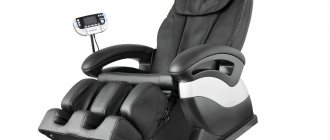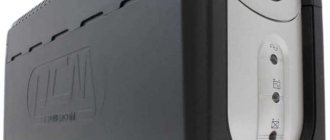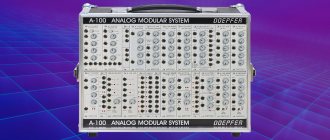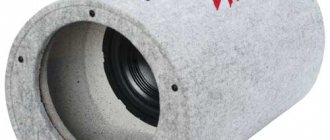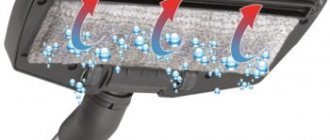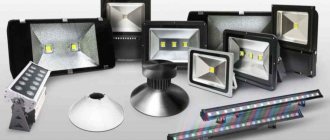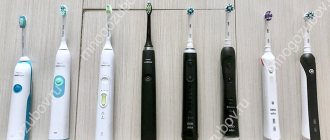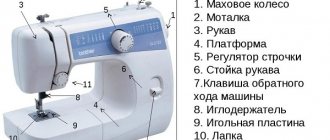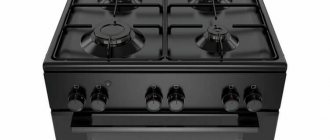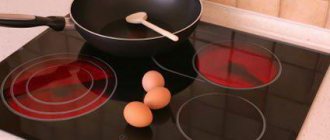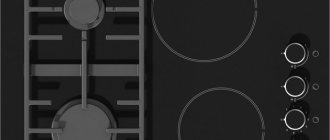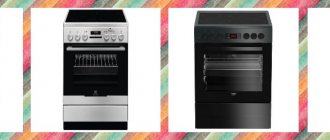When choosing an electric stove, the consumer takes into account many characteristics and operating nuances. The power, dimensions of the equipment, and functionality come to the fore. It is difficult to overestimate the importance of these criteria when using the stove, but there are also fundamentally important selection criteria on which the quality of the cooking process and the safety of equipment operation depend. These parameters also include the type of burner. This characteristic has become especially relevant against the backdrop of the emergence of stoves equipped with glass-ceramic surfaces. When familiarizing themselves with such models, many housewives discover Hi Light burners for the first time. What they are and what their peculiarity is are quite logical questions, which a general overview of this part of the electric stove will allow you to understand. It often happens that the emergence of innovative technologies overshadows all the advantages of traditional devices. In order not to make a mistake when switching to new equipment, it is worth assessing the features and capabilities of different burners.
Rapid burners
On such a surface you can see red-hot high-temperature spirals. The heating process takes an average of 10 seconds, which ensures convenient cooking. Rapid-type burners are present in the model lines of almost all manufacturers. Versions of stoves differ in the shape of the working surface and power. By the way, there are rapid burners for electric stoves with an expandable heating zone, as well as those made in a traditional round shape. Thanks to this approach, the owner of the stove will be able to cook in any vessel without thinking about uneven heating and wasted energy consumption. In burners with a diameter of about 21 cm, the power is usually 2.1 kW, and options for 14.5 cm provide heating with a power of 1.2 kW. The advantages of such models include their efficiency in heating large dishes, for example, if you need to cook a large pot of soup or cook a lot of vegetables at the same time.
Popular models
The undisputed leader in the consumer rating is the inexpensive two-burner hob BHC36106. This is a model with a classic black panel with a power of 3 kW and a good selection of functions, including child protection and automatic shutdown of heating zones.
The hob BHC66977 is in great demand. This is the best choice in terms of price and quality ratio: a black stove with four burners, a full set of functions, with the exception of sensors for installed dishes, with a power of 6.9 kW.
Halogen cooking surfaces
The heating process in this case is ensured by a high-temperature spiral, which is combined with a halogen lamp - hence this burner got its name. This type of stove is equipped with a gas-filled quartz tube, which is involved in heating the cookware. Such surfaces can also be distinguished by the characteristic glow of a bright red lamp, which emits more and more heat as it glows.
The advantages of a halogen surface include high power, fast heating and the same cooling. Such stoves reach their maximum power almost immediately after switching on, so you won’t have to wait long for the optimal temperature regime. Today, halogen type burners can be found in the model lines of manufacturers Bosch, Zanussi, etc.
Advantages and disadvantages
Halogen electrical panels are modern functional devices that simplify the cooking process; they are simple and easy to use.
Along with the advantages, they also have a number of disadvantages. Advantages:
- Rapid heating of the cookware and its contents reduces cooking time.
- The heat spreads upward, the dishes standing nearby do not heat up and it is also not hot near the stove.
- No open source of fire.
- Quick cooling of the hob.
- Availability of heating indication after the stove is turned off.
- Simple and convenient controls. Various models may use mechanical or electronic adjustment, as well as remote control using a remote control.
- A smooth surface of the hob that is easy to maintain in perfect order.
- Attractive appearance.
Flaws:
- High cost compared to standard electric stoves.
- High power consumption, it may be necessary to replace the wiring with a larger one.
- Short service life.
- Do not place wet dishes on the surface; cold drops falling on a hot burner can damage the glass-ceramic surface.
- Easy to damage if handled carelessly and during cleaning.
- You cannot use cauldrons and woks, as well as other utensils with uneven bottoms.
Having familiarized yourself with these parameters, you can easily determine how suitable such a stove is for you and whether it can become a real assistant in your kitchen.
Induction models
This is one of the latest technological developments, providing both high functionality of the plates and good ergonomics. The operating principle in this case is based on the interaction of an inductor and a powerful electric generator, which form an electromagnetic field. Thanks to changes in the directions of this field, induction burners for electric stoves provide rapid heating of dishes. In practice, you can notice another feature of such panels: they remain cold to the touch. This difference increases the safety of using induction cookers and makes operation convenient.
There is also an advantage in the form of savings, since energy is consumed exactly in the amount required to heat a particular cookware. The technology itself is quite complex, so such models can only be found in the lines of leading manufacturers. In particular, induction hobs are found in Electrolux, Siemens and Booster cookers.
Types of burners in electric cooktops
Hobs powered by the life-giving power of electricity guarantee greater operational safety compared to gas ones. Firstly, during their operation there is no open flame and “blue fuel” is not burned, due to which it is easier to breathe in the kitchen and the risk of gas poisoning when the burner flame goes out is significantly reduced. And secondly, the surfaces of electrical panels are often easier to clean from dirt. All of them are united under one wing by electricity as a heat source, but the heating elements are very diverse.
Cast iron burners
The simplest type of heating elements looks like a “pancake” protruding above the working surface
, under which the electric heater coil is laid. Such burners made of hard and durable cast iron take a long time to heat up and cool down slowly, which makes them less practical in comparison with their electric peers. The main advantage of cast iron burners is their low cost, which is why they are often found on board stoves in the budget segment. The substrate for “pancakes” is usually enameled work surfaces or stainless steel - easy to maintain and quite attractive in appearance.
| Traditional cast iron “pancakes” are gradually becoming a thing of the past. |
In addition to standard cast iron burners, there are two special versions of “pancakes”:
- with a red circle in the center - an express burner with increased power (heats up approximately 1.5 times faster than a regular burner);
- with a white circle in the center - a burner with a built-in temperature sensor (after the water boils, it automatically reduces the heating power).
Over time, cast iron warps and loses its shape when exposed to high temperatures, which prevents cookware from fitting tightly to the surface of the burner. You should also be careful about getting cold water on a heated cast-iron heater - this can cause the “pancake” to crack.
The next stage of evolution in the hierarchy of electric burners is heating elements “under the cover” of a glass-ceramic work surface.
Glass ceramic hobs Bosch PIE 631 FB1E from RUR 29,000. Electrolux IPE 6453 KF from RUR 28,900 Electrolux EHF 96547 XK from RUR 19,299 Bosch PUE 611 FB1E from RUR 26,700 Bosch PXX 695 FC5E from RUR 44,000 Electrolux IPE 6440 KX from RUR 26,099 Bosch PKE 611 D17E from RUR 15,190 Bosch PIB 375 FB1E from RUR 27,100 Electrolux EHF 96547 FK from RUR 19,400 Samsung NZ64H37070K from RUR 19,800 Bosch PUC 631 BB1E from RUR 23,409 Gorenje IT 321 BCSC from RUB 18,150. Electrolux EHH 56240 IK from RUR 21,300 Hansa BHI68312 from RUR 15,300 Krona CORTO 30 BL from RUR 5,790
Hi-Light burners
Burners based on a serpentine-shaped corrugated tape heater have become widespread.
, launched along the perimeter of the outlined zone. Its heating is quite effective and takes only 5-7 seconds. In addition, Hi-Light burners quickly respond to changes in power, adapting to the user-set value in the blink of an eye.
| Two-zone Hi-Light burner - inside view. |
The fly in the ointment is not the most economical energy consumption: all other things being equal, a rapid burner with a working area diameter of 15-18 cm consumes 1-1.5 kW per hour, and the Hi-Light type - 1.5-2 kW.
Hobs with Hi-Light burners
Electrolux EHF 96547 XK from RUR 19,299 Bosch PKE 611 D17E from RUR 15,190 Electrolux EHF 96547 FK from RUR 19,400 Krona CORTO 30 BL from RUR 5,790 Bosch PKE 645 B17E from RUR 15,900 Bosch PKF 645 FP2 from RUR 20,800 Electrolux CPE 6433 KF from RUR 19,800 Gorenje ECT 644 BCSC from RUR 15,590 Beko HIC 64400E from RUR 10,125 Midea MC-H64160 from 10,090 rub. Bosch PKF 645 CA1E from RUR 17,009 Bosch PKF 651 FP1E from RUR 19,989 Bosch PKN 645 B17 from RUR 16,700 Electrolux EHV 56240 AK from RUR 14,870 Hansa BHC36106 from 8,000 rub.
Rapid burners
High-temperature spirals can be seen through the durable glass on this type of cooking surface They heat up and cool down in about 10-15 seconds
. The highest operating efficiency of rapid burners is achieved when heating large cookware.
| Rapid burners are based on a high-temperature spiral. |
The level of energy consumed by a burner is strongly influenced by its size and shape (there are rapid burners with an expandable heating zone, which is useful when cooking dishes in non-standard dishes).
Halogen burners
In the heart of halogen burners there are tubes filled with rarefied vapors of inert gases. When current passes, they emit a bright red glow, the nature of which makes hobs of this kind stand out from the background of other electric relatives. Halogen burners reach their maximum power almost immediately after turning on the stove and they cool down just as quickly.
, reducing the risk of burns when touching heated surfaces of the panel.
| A halogen burner can be easily identified by eye by its characteristic bright glow. |
The halogen type of burners is good in everything except service life - depending on the intensity of use of the stove, it ranges from 2-3 to 7-8 years. Some hob manufacturers extend the life of the halogen burner by implementing separate control of the lamp and heater. Thus, the halogen lamp is turned on only for the heating period, and then until the end of cooking, only the ribbon heating element works.
Induction burners are considered the most progressive today.
Induction burners
The operating principle of heating elements of this type involves the use of magnetic field energy for heating. It is formed by the interaction of an inductance coil and a powerful electric generator installed “under the hood” of the hob. All the energy is transferred directly to the cookware in which cooking takes place - the induction work surface heats the bottom of pots and pans directly, while it itself remains cold
or slightly warm from contact with the cookware (the user will be informed about the residual heat by the corresponding indication).
| The working surface of the induction panel remains cool to the touch, which increases the safety of equipment operation. |
One of the mandatory requirements for induction heating hobs is the use of ferromagnetic cookware with a thick bottom - permanent magnets “stick” to the bottom of such utensils. Paired with ordinary pots inherited from my grandmother, the stove simply will not start working. Also, among the security systems in the assets of induction cooking surfaces, an important mission is performed by the function of blocking the activation of the burners if there are foreign objects on them (a forgotten spoon, towel, etc.).
Many induction hob models now support the BOOSTER intensive heating function.
, the meaning of which is that the power of one burner can be briefly shared with the neighboring one.
Another useful feature is autofocus of the burners
. In this case, it is meant that the heater automatically adjusts to the size of the bottom of the pan, resulting in maximum panel efficiency with minimal energy consumption.
It is important to know!
Induction hobs cannot be installed above ovens, dishwashers, washing machines and other household appliances with metal surfaces.
Induction hobs
Bosch PIE 631 FB1E from RUR 29,000 Electrolux IPE 6453 KF from RUR 28,900 Bosch PUE 611 FB1E from RUR 26,700 Bosch PXX 695 FC5E from RUR 44,000 Electrolux IPE 6440 KX from RUR 26,099 Bosch PIB 375 FB1E from RUR 27,100 Samsung NZ64H37070K from RUR 19,800 Bosch PUC 631 BB1E from RUR 23,409 Gorenje IT 321 BCSC from RUB 18,150. Electrolux EHH 56240 IK from RUR 21,300 Hansa BHI68312 from RUR 15,300 Hansa BHI68302 from RUR 15,220 Bosch PUC 64 RAA5E from RUR 22,712 Electrolux IPES 6451 KF from RUR 33,900 Bosch PVQ 695F C5E from RUR 39,500
In practice, combinations of different types of burners are quite often used. A striking example of such a solution is the Electrolux EHG 96341 FK black panel Price from 31,590 to 34,521 rubles, which combines induction burners with Hi-Light heating elements in one bottle. Also on store shelves there are many models with burner formulas 2 gas + 2 electric and 3 gas + 1 electric.
Delicious dishes and bon appetit!
Models with Hi Light technology
Burners of this type are distinguished by the fact that a tape made of a high-resistivity alloy is used as a working heating element. It is laid as the basis of the hob, the operation of which it ensures. The heating rate in this case is one of the highest - on average 5-6 seconds. A rational approach to heat distribution is also noted. The fact is that the radiation is distributed over the entire area of the Hi Light working area. Heating such a stove is quite efficient, but it also consumes a lot of energy. So, if a standard rapid surface requires 1.5 kW per hour, then in the case of Hi Light models it can consume up to 2 kW. Despite all the advantages, a complete transition to this technology has not yet been observed. That is, models in which all burners are implemented according to this principle are still rare. More often you can find stoves that provide a combined type of heating.
Rapid burners or Hi Light - which is better?
It is these two types of heating elements of cooking surfaces that are most often subject to comparison. They are approximately in the same price range, but in terms of performance characteristics they differ somewhat. Let's consider the main parameters of these two types of hob elements and determine which is better: rapid burners or Hi Light. Let's start with the heating speed.
The time required to heat up a rapid-type hob is 12 seconds, while on a Hi Light hob you can start cooking in just 5 seconds. This is a significant advantage, especially when it comes to rushing to prepare breakfast or dinner for children.
The second criterion is the type of heating element. In rapid burners it is a spiral, and in Hi Light it is a tightly laid corrugated tape. In the second case, the useful heating area will be larger, and accordingly the speed and efficiency will be higher.
The third criterion is design. Hi Light burners are located under a glass-ceramic hob and look stylish and modern. When working, a thin red corrugated tape is visible through the glass of the working surface of the stove. The spiral of the rapid burner most often does not hide under the panel due to the heating rate not being high enough. As a result, the slab has an unaesthetic appearance.
Combination burners
Perhaps the most technologically advanced type of modern electric stove is a combination of two types of burners - induction and Hi Light. The now familiar four-zone configuration includes two compartments that operate on the principle of an electromagnetic field, and two panels containing high-resistivity alloy tapes. In this case, the user can extract the maximum of useful qualities that Hi Light burners offer. What is this from the point of view of the owner of a combined model? First of all, the ability to quickly heat water, boil eggs and perform other operations that require fast and maximum heat transfer. If efficiency fades into the background, then you can switch to the induction burner function, which will provide ease of use with less energy consumption.
Disadvantages of Hi Light burners
Experts note two unpleasant moments that you should prepare for when purchasing a Hi Light electric stove. First of all, this is the lack of step adjustment. The surface operates at a given mode; fine adjustments are not provided. In other words, in terms of functionality, this option is significantly inferior even to outdated models. Another disadvantage that the Hi Light burner type has concerns savings. If we omit the high cost of the stoves themselves operating on this technology, then the demand for electricity will remain. It is for this reason that manufacturers are reluctant to develop this concept. However, if you need quick heating of food, reliability and durability, then this option is quite suitable.
Reviews of Hi Light burners
It must be said right away that these burners are used by housewives who have appreciated all the advantages of glass-ceramic coatings; accordingly, the level of requirements for equipment in this category is quite high. So, the power of the stoves, ease of use, stylish appearance, ease of maintenance and reliability are noted. It is also worth noting the reviews that the combined Hi Light burners receive. What is this from a practical point of view? The combination of electromagnetic and electric heating allows you to get rid of the disadvantages of induction panels and the “gluttony” of Hi Light systems. According to the owners, the former cope better with the tasks of long-term cooking and stewing, while the latter are advisable to use for frying and heating.
Glass ceramic or regular electric stove
Electric stoves are divided into 3 main types:
- With cast iron burners. This is the most budget option for slabs. The cast iron burners of such tiles cool down slowly and also take too long to heat up, so most often buyers opt for an induction or glass-ceramic hob. The advantage of this technique is that it is not demanding on the quality of the dishes and materials.
- Induction.
- With glass ceramic coating.
To decide which stove is better: electric or ceramic, basic factors are taken into account:
- price;
- appearance;
- functions that determine the level of convenience during operation.
The choice should be made based on your own preferences and requirements. You can find an electric stove with cast iron burners, which will be in no way inferior in quality to a glass-ceramic one, and will also do its job well.
For many, it is important that the stove heats up as quickly as possible and is able to cool down at the same speed. In this case, the classic version of an electric stove will not work.
How to choose the optimal model?
First you need to decide on the primary selection criteria. If power is at the forefront, then there will be no problems with the choice - high power potential today is characteristic of all types of hobs. Another thing is that peak power is not achieved immediately, and here the Hi Light burner type comes first, providing heating within 6 seconds. This option may also be of interest to those who appreciate the stylistic advantages of glass-ceramic panels, but are not prepared for the disadvantages of induction models. Other electric stoves should only be used due to financial limitations. Traditional stoves are cheaper, but in terms of ease of use and technical capabilities they are inferior to modern hobs.
